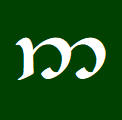4.23 Nose ᴱQ. mem n. “beak, ⚠️nose” A word in the Qenya Lexicon of the 1910s glossed “nose, beak” derived from the early root ᴱ√MEME (QL/61). Neo-Quenya: In later writings, Tolkien used ᴹQ. nengwe for “nose”, but I think it might be worth retaining ᴺQ. mem for “beak”. There are
Paul Strack
Select Elvish Words 4.21-4.22: Eye, Ear
4.21 Eye Q. alahen n. “eyeless” An adjective for “eyeless” appearing in Late Notes on Verb Structure (LVS) from 1969 as a combination of Q. al(a)- “not” and Q. hen “eye”, so perhaps more literally “*not eyed” (PE22/153). This use of al(a)- to mean “-less, without” was a normal but
Select Elvish Words 4.205-4.209: Forehead, Brow, Jaw, Cheek, Chin
4.205 Forehead ᴱQ. kandóla n. “crown of head” A word appearing as ᴱQ. kandóla “crown of head” in a list of body-parts from the 1920s, an elaboration of ᴱQ. nóla which likewise could mean “crown of head” (PE14/117), but elsewhere generally meant “head” or “hill” (QL/67). The initial element of
Select Elvish Words 4.20-4.204: Head, Skull, Face
4.20 Head Q. cas n. “head, [ᴱQ.] top, ⚠️summit” This is the Quenya word for “head”, with a stem form of car- because medial s generally became z and then r, but the s was preserved when final. This word can refer to the head of people and animals, as
Select Elvish Words 4.17-4.19: Horn, Tail, Back
4.17 Horn (animal) ᴹQ. hyalma n. “conch, shell, horn of Ulmo” A noun in The Etymologies of the 1930s glossed “shell, conch, horn of Ulmo” derived from primitive ᴹ✶syalmā under the root ᴹ√SYAL (Ety/SYAL). In this document hyalma was given as the name of tengwa #33 (9), and it appeared
Select Elvish Words 4.15-4.16: Blood, Bone
4.15 Blood ᴱQ. mear (mearn-) n. “gore, blood” A noun appearing as ᴱQ. mear “gore” in the Qenya Lexicon of the 1910s under the early root ᴱ√MEHE “ooze‽”, with stem forms mearn- or meas- (QL/60). The H in the root represents voiceless velar spirant χ, which was voiced to ɣ
Select Elvish Words 4.143: Hair (other)
4.143 Hair (other) ᴹQ. fasse n. “tangled hair, shaggy lock” A noun in The Etymologies of the 1930s glossed “tangled hair, shaggy lock” derived from the root ᴹ√PHAS (Ety/PHAS). ᴹQ. fasta- vb. “to tangle” A verb in The Etymologies of the 1930s glossed “tangle” derived from the root ᴹ√PHAS (Ety/PHAS).
Select Elvish Words 4.14-4.142: Hair, Beard
4.14 Hair Q. findë n. “hair (especially of the head); tress or plait of hair, [ᴹQ.] braid of hair” A word mentioned by Tolkien in The Shibboleth of Fëanor from 1968 with glosses “hair, especially of the head” (PM/340) and “hair — a tress or plait of hair” (PM/345). The
Select Elvish Words 4.11-4.13: Body, Skin, Flesh
4.11 Body Q. hroa n. “body, bodily form, ⚠️flesh; physical matter” A word for “body” widely used in a variety of documents from 1958-59, derived from primitive ✶srawā based on the root √SRAW (MR/350). This word and derivation was mentioned again in notes from 1968 (VT47/35). In one place Tolkien
Select Elvish Words 3.99: Animals (other)
3.99 Animals (other) Q. ecellë n. “urchin, hedgehog” A word for “urchin, hedgehog” appearing in its plural form ekelli in 1965 notes on the land and beasts of Númenor, though not necessarily describing the terrestrial creature (NM/336). This word is probably based on the root √EK “sharp point”. Q. lopoldë




